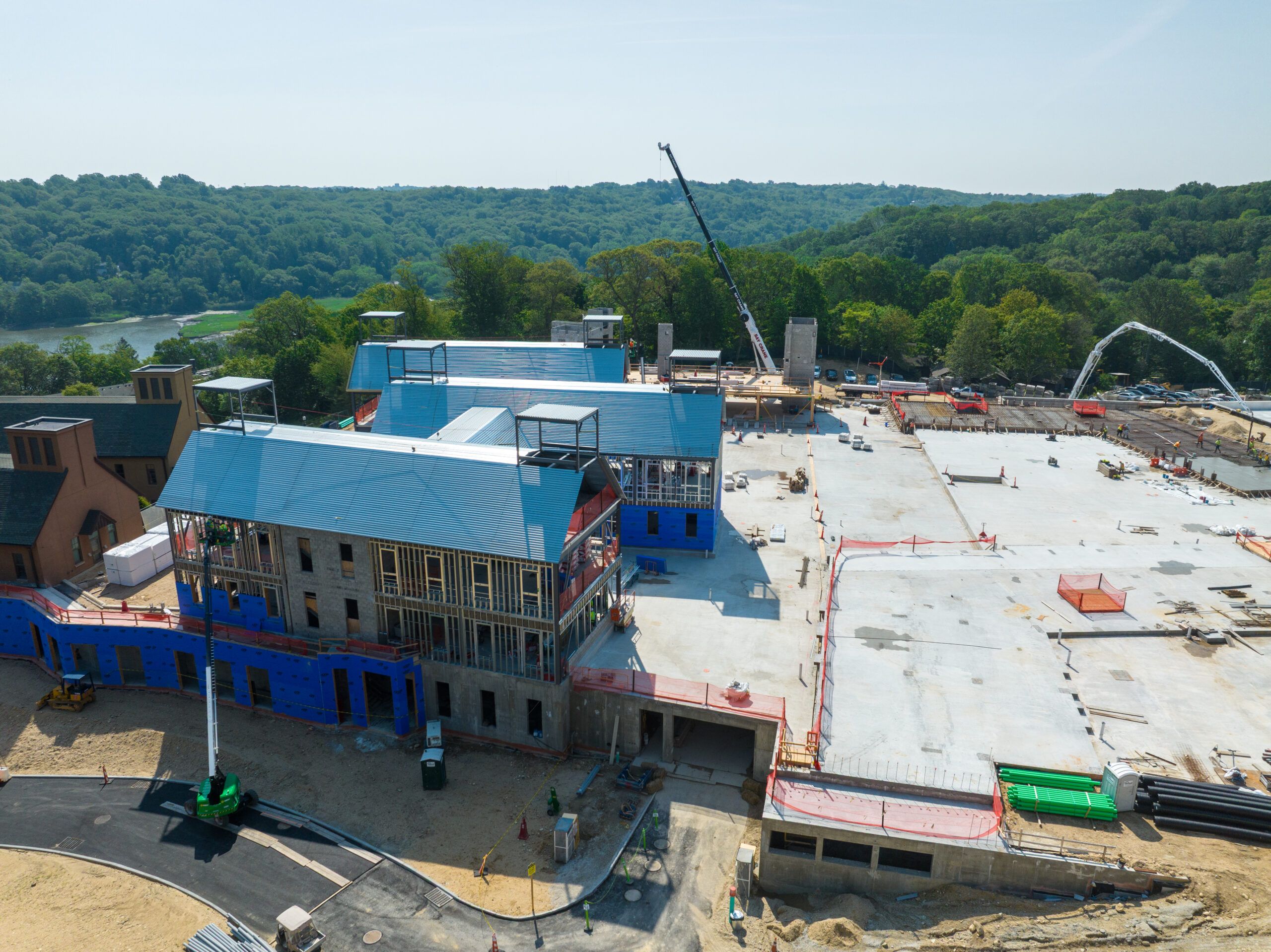Living off-grid doesn’t mean you have to haul buckets of water like it’s 1850. You can have real running water—hot showers, kitchen taps, the works—even in the middle of nowhere.
But here’s the thing: most “experts” giving off-grid water advice have never actually lived without city water. They’ll sell you expensive systems that fail when you need them most, or tell you to “just dig a well,” like it’s that simple.
We’ve been helping people set up off-grid water systems long enough, and in this guide, you’ll learn exactly what works, what doesn’t, and why most people get off-grid water completely wrong.
Why Most Off-Grid Water Advice Misses the Mark
The biggest mistake I see? People often focus on the source before understanding their own needs. They’ll spend $15,000 on a well before figuring out they only need 50 gallons a day, not 500.
Here’s what matters: your daily usage, the resources available in your location, and having backup plans in place for when things go wrong. Because they will go wrong.
Whether you’re setting up a remote cabin or considering a drinking water fountain for home in an off-grid setup, understanding your real water needs comes first—not the fancy equipment.
Figure Out Your Real Water Needs (Most People Get This Wrong)
Don’t guess. Track everything for a week. Here’s what real off-grid families actually use:
| Activity | Reality Check | What “Experts” Say |
| Drinking | 0.5-1 gallon/person/day | 1 gallon (they’re close) |
| Cooking | 0.3-0.8 gallons/day | 0.5 gallons (realistic) |
| Hygiene | 1-3 gallons/person/day | 2 gallons (depends on habits) |
| Dishes | 1-2 gallons/day | 1.5 gallons (about right) |
| Laundry | 2-5 gallons/load | Variable (they never mention frequency) |
Real talk: A family of four can live comfortably on 15-25 gallons per day if they’re smart about it. That’s way less than the 50-100 gallons most guides suggest.
Water Sources: What Actually Works in the Real World
Wells: The Gold Standard (If You Can Afford It) A good well is the holy grail of off-grid water. Consistent flow, relatively clean, and once it’s in, it’s in. But here’s what they don’t tell you: drilling can cost $10,000+ and there’s no guarantee you’ll hit water.
Get a hydrogeological survey first. Costs $500-1,000 but can save you from drilling a $15,000 dry hole.
According to hydrogeologist Thom Hanna, who has worked for more than 35 years in well design and hydraulics, “The most important thing about well design and construction is development, the second most important thing is development, and the third most important thing is development. If you remember that, you’ll always have a good well.”
Springs: Free Water (If You’re Lucky) Natural springs are amazing when they work. They provide clean water, are gravity-fed, and require minimal equipment. The catch? Most “springs” people find are seasonal seeps that dry up in summer.
Test flow rates in late summer/fall. If it’s still running in the driest months, you’ve got something.
Rainwater: Surprisingly Reliable. When done correctly, rainwater collection can be incredibly reliable. A 2,000-square-foot roof can collect about 1,200 gallons from just one inch of rain.
Surface Water: Last Resort, like rivers, lakes, and streams—they work, but you’ll spend a fortune on filtration. Plus, upstream contamination is always a risk you can’t control.
The Right Way to Store Water (Avoid These Expensive Mistakes)
Tank Sizing That Makes Sense. Most people buy tanks that are too big or too small. Here’s the formula that actually works:
Daily usage × 7 days × 1.5 safety factor = minimum tank size
For that family of four using 20 gallons/day: 20 × 7 × 1.5 = 210 gallons minimum.
Tank Materials That Last
- Food-grade polyethylene: Best bang for buck. Lasts 15-20 years.
- Stainless steel: Expensive but bulletproof. Worth it for permanent installations.
- Fiberglass: Good middle ground. More durable than plastic, cheaper than steel.
Location Matters More Than You Think. Put tanks higher than your house if possible. Every foot of elevation gives you 0.43 PSI of pressure. No pump needed for basic fixtures.
Pumping Water: Solar vs. Everything Else
This is where most people throw money away on the wrong equipment.
Hand Pumps: Reliable Backup. Every off-grid water system needs a manual backup. Hand pumps work when everything else fails. Install a bypass valve so you can switch between electric and manual pumping.
Solar Pumps: The Sweet Spot. A quality solar-powered pump can run for decades with minimal maintenance. Size your solar array for your worst-case pumping needs—usually winter with shorter days.
According to pump manufacturers, proper sizing means calculating total dynamic head (vertical lift + friction loss) and matching it to your pump’s specifications.
Wind Pumps: Only If You Have a Serious Wind Need. Consistent 10+ mph winds. Most places don’t have enough wind to make this worthwhile.
Filtration: Don’t Overthink This
The filtration industry loves to scare people into buying expensive systems. Here’s what you actually need:
Three-Stage Approach:
- Sediment filter: Removes dirt, rust, particles
- Carbon filter: Handles chemicals, taste, odor
- Final polishing: UV light or ceramic filter for pathogens
Skip the fancy stuff unless you have specific contamination issues. A basic three-stage setup handles 95% of water quality problems.
Power Systems That Don’t Let You Down
- Solar (The Obvious Choice): Size your solar array for your pump’s power draw plus 30% overhead. Include battery storage for 2-3 days of pumping capability.
- Generator Backup: Your solar panels can be damaged, batteries may fail, and pumps can break. Have a generator that can run your backup systems.
- Gravity: If your source is higher than your house, use gravity. A simple siphon system can move thousands of gallons with zero energy input.
When Things Go Wrong (And They Will)
- Frozen Pipes: Insulate everything below ground level. Use heat tape on exposed sections. Keep a trickle flowing during extreme cold—moving water doesn’t freeze as easily.
- Pump Failures: Always have a manual backup pump and the tools to swap them out. Most pump failures happen at the worst possible times.
- Contamination Issues: Test your water quarterly. Keep bleach and basic test strips on hand. Know how to shock-chlorinate your system when needed.
The Real Costs (What Nobody Tells You)
Basic gravity-fed rainwater system: $2,000-4,000 Well with solar pump: $15,000-25,000 Spring development: $1,000-5,000 Surface water with full treatment: $8,000-15,000
Factor in maintenance: 5-10% of initial cost annually for repairs, filter changes, and system updates.
Bottom Line: Start Simple, Build Smart
Most people try to build the perfect system right away and end up with an expensive mess. Start with rainwater collection and basic storage. Add pumping and filtration as needed. Build in redundancy from day one.
The best off-grid water system is the one that works every day for years, not the one with the fanciest equipment. Simple, reliable, maintainable—that’s what keeps water flowing when you’re miles from the nearest plumber.
FAQ
How do I figure out how much water I actually need for off-grid living?
Track everything for a full week—drinking, cooking, cleaning, bathing. Most families use 15-25 gallons per day, not the 50-100 gallons most guides suggest. Record actual usage, don’t guess.
What’s the most reliable water source for off-grid properties?
A properly drilled well with a submersible pump is the gold standard. Consistent flow, minimal treatment needed, and works year-round. But get a hydrogeological survey first—drilling costs $10,000+ with no guarantees.
Can I really rely on rainwater collection as my primary water source?
Absolutely, if you size it right, a 2,000-square-foot roof collects about 1,200 gallons per inch of rainfall. In most areas, that’s plenty for a family’s needs. The key is adequate storage for dry periods.
What’s the biggest mistake people make with off-grid water systems?
Buying equipment before understanding their needs. They’ll spend $15,000 on a well when rainwater collection would work fine, or buy tanks that are way too big or too small for their actual usage.
How much should I budget for a complete off-grid water system?
Depends on your source. Basic rainwater system runs $2,000-4,000. Well, with a solar pump is $15,000-25,000. Factor in 5-10% annually for maintenance and repairs. Start simple and expand as needed.











